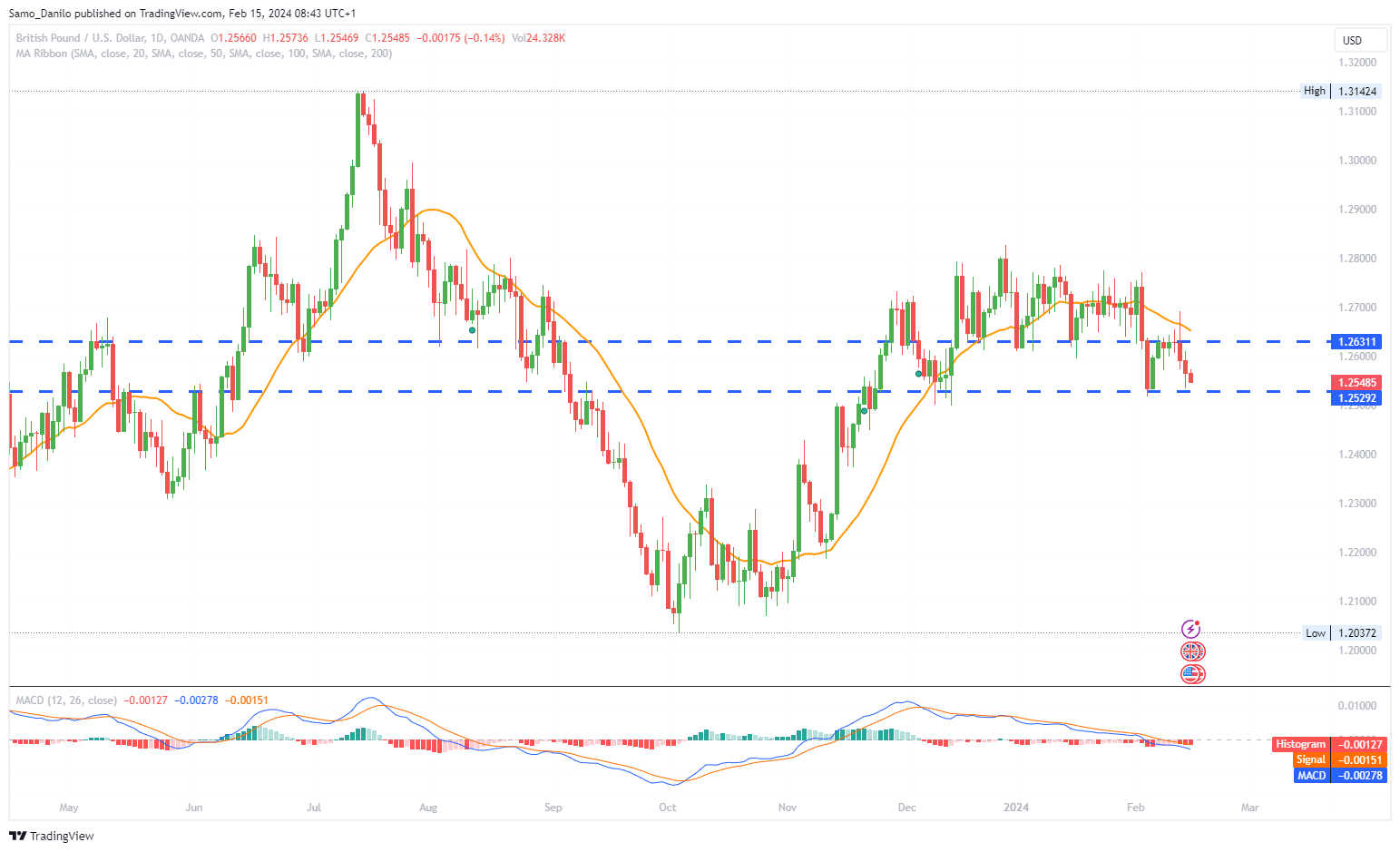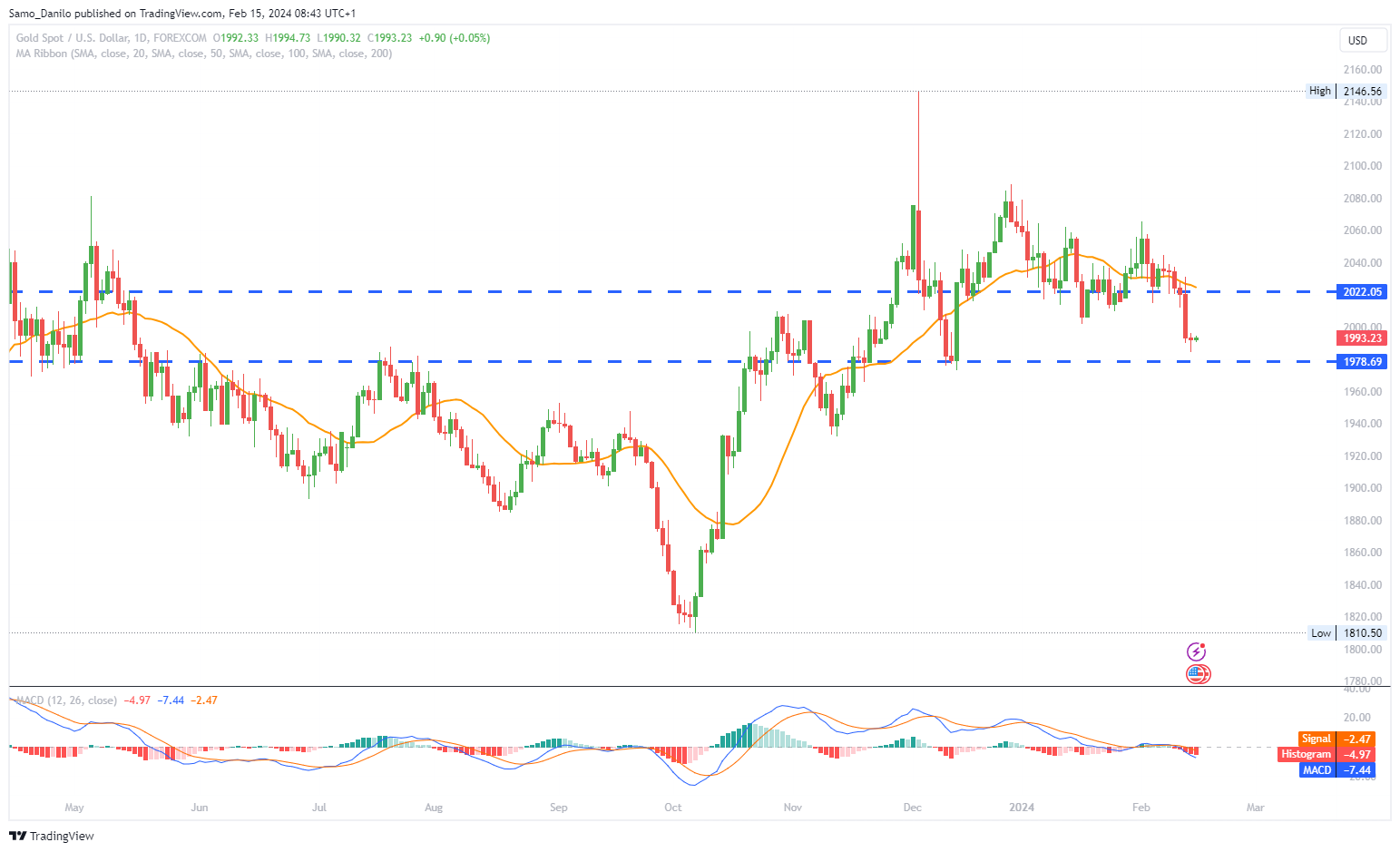EURUSD
- EUR/USD is showing signs of recovery during European trading on Thursday. This suggests a potential rebound in the euro against the US dollar after recent movements.
- The US dollar is facing challenges, and its struggle is attributed to mixed messages from Federal Reserve (Fed) officials. The conflicting statements from various Fed members may be contributing to uncertainty in the foreign exchange market.
- Traders are eagerly awaiting the US Retail Sales report for fresh policy hints. Economic indicators, such as retail sales, play a crucial role in shaping expectations about the health of the US economy and potential monetary policy adjustments.
- Investors are speculating about the Federal Reserve initiating a cycle of monetary easing, possibly starting in June. This speculation could be based on concerns about economic growth, inflation, or other factors that might prompt the Fed to consider easing monetary policy.
- A. Goolsbee from Chicago emphasized that even if there's slightly higher inflation in the coming months, it would align with the Committee's trajectory towards the target. This suggests a nuanced view on inflation dynamics and its interpretation by the Federal Reserve.
- Vice President L. de Guindos of the European Central Bank (ECB) remarked that progress is being made, but caution is warranted to avoid premature conclusions. This cautionary tone indicates a careful approach by the ECB in assessing economic developments.
Closing statement: the recovery of EUR/USD, the struggles of the US dollar, anticipation of the US Retail Sales report, speculation about Fed monetary easing, the Fed's stance on inflation, and the cautionary tone from the ECB's Vice President are all contributing factors to the dynamics of EUR/USD in the current market environment.
GBPUSD
- GBP/USD is experiencing modest bearish pressure and is trading near 1.2550 in the European session on Thursday. This indicates a slightly negative sentiment towards the British Pound against the US Dollar.
- The US economic docket featured Federal Reserve speeches by Chicago Fed President Austan Goolsbee and Governor Christopher Waller. Goolsbee mentioned that inflation is coming down and emphasized that rate cuts should be tied to confidence that inflation is following the Fed's path. Waller highlighted the need for more flexible forward guidance, suggesting a nuanced approach to monetary policy.
- In the European session, the UK's inflation data was released, showing that the inflation rate was lower than expected. The YoY inflation stood at 4%, unchanged from December but below the estimate of 4.2%. Underlying inflation, at 5.1% YoY, was also unchanged but below the estimate of 5.2%.
- Bank of England (BoE) Governor Andrew Bailey commented on the latest inflation report, stating that it does not change the view from February's monetary policy decision. He emphasized the need to see more evidence that prices are coming down before making significant policy adjustments.
- The combination of modest bearish pressure on GBP/USD, speeches by Federal Reserve officials, and lower-than-expected UK inflation data has likely influenced the currency pair. The market may be adjusting its expectations based on the economic data and central bank communications.
| SMA (20) | Slightly Falling |
|
| RSI (14) | Slightly Falling |
|
| MACD (12, 26, 9) | Slightly Falling |
|
Closing statement: GBP/USD is facing modest bearish pressure, and developments in both the US and UK, including Federal Reserve speeches, lower-than-expected UK inflation, and statements from BoE Governor Andrew Bailey, are contributing to the dynamics of the currency pair in the current market environment.
GOLD
- Gold price is currently trading within a range, positioned just above a two-month low reached on Wednesday. This suggests a period of consolidation or indecision in the market.
- The anticipation of delayed Federal Reserve (Fed) rate cuts is providing support to the US Dollar (USD). This support for the USD is acting as a headwind for gold, which is a non-yielding asset. The prospect of higher interest rates tends to make non-yielding assets less attractive.
- Geopolitical tensions in the Middle East are cited as a factor limiting the downside for the safe-haven XAU/USD. Gold is often considered a safe-haven asset, and geopolitical uncertainties can contribute to its appeal.
- Fed Vice Chair for Supervision, Michael Barr, mentioned on Wednesday that the Fed remains confident, but the January Consumer Price Index (CPI) numbers indicate that the path to reaching the United States' 2% inflation target "may be a bumpy one." This statement suggests a cautious approach by the Fed regarding inflation dynamics.
- The upcoming release of US Retail Sales data, along with Jobless Claims and speeches from Fed officials, will be closely watched. These events are expected to provide fresh cues on Fed rate cut expectations, potentially influencing the trajectory of the US Dollar-denominated gold price.
| SMA (20) | Neutral | ||
| RSI (14) | Falling |
|
|
| MACD (12, 26, 9) | Falling |
|
|
Closing statement: gold remains range-bound, influenced by a mix of geopolitical factors, USD dynamics, and statements from Fed officials. The upcoming economic data releases and speeches will likely play a crucial role in determining the short-term movements in the XAU/USD pair.
CRUDE OIL
- West Texas Intermediate (WTI) US Crude Oil prices are experiencing a second successive day of pullback after reaching a monthly peak around mid-$78.00s.
- The main driver behind the current decline in Crude Oil prices is a larger-than-expected build in US Crude Oil inventories. This build exerts downward pressure on oil prices, suggesting an oversupply in the market.
- The monthly report from the Organization of the Petroleum Exporting Countries (OPEC) forecasts a rise in global Oil demand by 2.25 million barrels per day (bpd) in 2024 and by 1.85 million bpd in 2025. Surprisingly, this positive forecast does not seem to impress bullish traders, indicating that other factors are currently more influential.
- Despite a fresh escalation of tension in the Middle East, a region rich in oil, the geopolitical factors are not providing support to Crude Oil prices. This suggests that market sentiment may be more influenced by supply and demand dynamics.
- Market participants are now turning their attention to the US economic docket, which includes the release of the Empire State Manufacturing Index, monthly Retail Sales figures, the Philly Fed Manufacturing Index, and the Weekly Initial Jobless Claims. These data points could have an impact on oil prices as they provide insights into economic conditions and potential demand for oil.
| SMA (20) | Slightly Rising |
| |
| RSI (14) | Rising |
|
|
| MACD (12, 26, 9) | Slightly Rising |
|
Closing statement: the decline in WTI Crude Oil prices is primarily attributed to the oversupply indicated by the larger-than-expected build in US inventories, overshadowing positive global demand forecasts and geopolitical tensions. Traders are closely watching upcoming economic data for further market direction.
DAX
- Economic data for the Eurozone on Wednesday provided some relief by easing fears of a recession. The Eurozone economy, while stalling in Q4 quarter-on-quarter according to the second estimate, did not show a contraction, potentially alleviating concerns.
- Eurozone employment figures for Q4 exceeded expectations, showing a quarter-on-quarter increase of 0.3%, indicating positive trends in the labor market. Industrial production in December also surged by 2.6%, a significant improvement from the previous month's 0.4% increase.
- Investors are anticipating Eurozone trade data on Thursday, with forecasts indicating an expected widening of the trade surplus from €20.3 billion to €21.5 billion in December. A widening surplus is generally seen as positive, but the specific factors influencing this change will be crucial.
- The German trade surplus widened in December, primarily due to imports falling more than exports. This situation, if it continues, could refuel concerns about a potential economic recession in the Eurozone. Trade imbalances can be indicative of underlying economic challenges.
- ECB President Christine Lagarde is scheduled to speak. Any support or indication for an April ECB interest rate cut could influence investor sentiment and drive demand for DAX-listed stocks. Monetary policy decisions and signals from central banks are crucial drivers for stock markets.
| SMA (20) | Rising |
|
|
| RSI (14) | Slightly Rising |
| |
| MACD (12, 26, 9) | Slightly Rising |
|
Closing statement: In summary, while recent economic data have been positive, particularly in terms of employment and industrial production, the market remains sensitive to trade data and ECB commentary. Investors are closely monitoring indicators for signs of economic resilience or potential challenges in the Eurozone.




